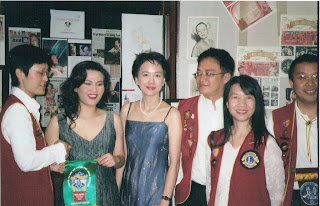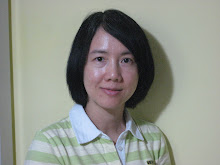HAPPY VALENTINE'S DAY
The History of Valentine's Day
Every February, across the country, candy, flowers, and gifts are exchanged between loved ones, all in the name of St. Valentine. But who is this mysterious saint and why do we celebrate this holiday? The history of Valentine's Day -- and its patron saint -- is shrouded in mystery. But we do know that February has long been a month of romance. St. Valentine's Day, as we know it today, contains vestiges of both Christian and ancient Roman tradition. So, who was Saint Valentine and how did he become associated with this ancient rite? Today, the Catholic Church recognizes at least three different saints named Valentine or Valentinus, all of whom were martyred.
 One legend contends that Valentine was a priest who served during the third century in Rome. When Emperor Claudius II decided that single men made better soldiers than those with wives and families, he outlawed marriage for young men -- his crop of potential soldiers. Valentine, realizing the injustice of the decree, defied Claudius and continued to perform marriages for young lovers in secret. When Valentine's actions were discovered, Claudius ordered that he be put to death.
One legend contends that Valentine was a priest who served during the third century in Rome. When Emperor Claudius II decided that single men made better soldiers than those with wives and families, he outlawed marriage for young men -- his crop of potential soldiers. Valentine, realizing the injustice of the decree, defied Claudius and continued to perform marriages for young lovers in secret. When Valentine's actions were discovered, Claudius ordered that he be put to death.
Other stories suggest that Valentine may have been killed for attempting to help Christians escape harsh Roman prisons where they were often beaten and tortured.
According to one legend, Valentine actually sent the first 'valentine' greeting himself. While in prison, it is believed that Valentine fell in love with a young girl -- who may have been his jailor's daughter -- who visited him during his confinement. Before his death, it is alleged that he wrote her a letter, which he signed 'From your Valentine,' an expression that is still in use today. Although the truth behind the Valentine legends is murky, the stories certainly emphasize his appeal as a sympathetic, heroic, and, most importantly, romantic figure. It's no surprise that by the Middle Ages, Valentine was one of the most popular saints in England and France.
 While some believe that Valentine's Day is celebrated in the middle of February to commemorate the anniversary of Valentine's death or burial -- which probably occurred around 270 A.D -- others claim that the Christian church may have decided to celebrate Valentine's feast day in the middle of February in an effort to 'christianize' celebrations of the pagan Lupercalia festival. In ancient Rome, February was the official beginning of spring and was considered a time for purification. Houses were ritually cleansed by sweeping them out and then sprinkling salt and a type of wheat called spelt throughout their interiors. Lupercalia, which began at the ides of February, February 15, was a fertility festival dedicated to Faunus, the Roman god of agriculture, as well as to the Roman founders Romulus and Remus.
While some believe that Valentine's Day is celebrated in the middle of February to commemorate the anniversary of Valentine's death or burial -- which probably occurred around 270 A.D -- others claim that the Christian church may have decided to celebrate Valentine's feast day in the middle of February in an effort to 'christianize' celebrations of the pagan Lupercalia festival. In ancient Rome, February was the official beginning of spring and was considered a time for purification. Houses were ritually cleansed by sweeping them out and then sprinkling salt and a type of wheat called spelt throughout their interiors. Lupercalia, which began at the ides of February, February 15, was a fertility festival dedicated to Faunus, the Roman god of agriculture, as well as to the Roman founders Romulus and Remus.
To begin the festival, members of the Luperci, an order of Roman priests, would gather at the sacred cave where the infants Romulus and Remus, the founders of Rome, were believed to have been cared for by a she-wolf or lupa. The priests would then sacrifice a goat, for fertility, and a dog, for purification.
 The boys then sliced the goat's hide into strips, dipped them in the sacrificial blood and took to the streets, gently slapping both women and fields of crops with the goathide strips. Far from being fearful, Roman women welcomed being touched with the hides because it was believed the strips would make them more fertile in the coming year. Later in the day, according to legend, all the young women in the city would place their names in a big urn. The city's bachelors would then each choose a name out of the urn and become paired for the year with his chosen woman. These matches often ended in marriage. Pope Gelasius declared February 14 St. Valentine's Day around 498 A.D. The Roman 'lottery' system for romantic pairing was deemed un-Christian and outlawed. Later, during the Middle Ages, it was commonly believed in France and England that February 14 was the beginning of birds' mating season, which added to the idea that the middle of February -- Valentine's Day -- should be a day for romance. The oldest known valentine still in existence today was a poem written by Charles, Duke of Orleans to his wife while he was imprisoned in the Tower of London following his capture at the Battle of Agincourt. The greeting, which was written in 1415, is part of the manuscript collection of the British Library in London, England. Several years later, it is believed that King Henry V hired a writer named John Lydgate to compose a valentine note to Catherine of Valois.
The boys then sliced the goat's hide into strips, dipped them in the sacrificial blood and took to the streets, gently slapping both women and fields of crops with the goathide strips. Far from being fearful, Roman women welcomed being touched with the hides because it was believed the strips would make them more fertile in the coming year. Later in the day, according to legend, all the young women in the city would place their names in a big urn. The city's bachelors would then each choose a name out of the urn and become paired for the year with his chosen woman. These matches often ended in marriage. Pope Gelasius declared February 14 St. Valentine's Day around 498 A.D. The Roman 'lottery' system for romantic pairing was deemed un-Christian and outlawed. Later, during the Middle Ages, it was commonly believed in France and England that February 14 was the beginning of birds' mating season, which added to the idea that the middle of February -- Valentine's Day -- should be a day for romance. The oldest known valentine still in existence today was a poem written by Charles, Duke of Orleans to his wife while he was imprisoned in the Tower of London following his capture at the Battle of Agincourt. The greeting, which was written in 1415, is part of the manuscript collection of the British Library in London, England. Several years later, it is believed that King Henry V hired a writer named John Lydgate to compose a valentine note to Catherine of Valois.
In Great Britain, Valentine's Day began to be popularly celebrated around the seventeenth century. By the middle of the eighteenth century, it was common for friends and lovers in all social classes to exchange small tokens of affection or handwritten notes. By the end of the century, printed cards began to replace written letters due to improvements in printing technology. Ready-made cards were an easy way for people to express their emotions in a time when direct expression of one's feelings was discouraged. Cheaper postage rates also contributed to an increase in the popularity of sending Valentine's Day greetings. Americans probably began exchanging hand-made valentines in the early 1700s. In the 1840s, Esther A. Howland began to sell the first mass-produced valentines in America.
 According to the Greeting Card Association, an estimated one billion valentine cards are sent each year, making Valentine's Day the second largest card-sending holiday of the year. (An estimated 2.6 billion cards are sent for Christmas.)
According to the Greeting Card Association, an estimated one billion valentine cards are sent each year, making Valentine's Day the second largest card-sending holiday of the year. (An estimated 2.6 billion cards are sent for Christmas.)
Approximately 85 percent of all valentines are purchased by women. In addition to the United States, Valentine's Day is celebrated in Canada, Mexico, the United Kingdom, France, and Australia.
Valentine greetings were popular as far back as the Middle Ages (written Valentine's didn't begin to appear until after 1400), and the oldest known Valentine card is on display at the British Museum. The first commercial Valentine's Day greeting cards produced in the U.S. were created in the 1840s by Esther A. Howland. Howland, known as the Mother of the Valentine, made elaborate creations with real lace, ribbons and colorful pictures known as "scrap".
LOVE IS IN THE AIR
Special thanks to American Greetings
Source: history.com




 One legend contends that Valentine was a priest who served during the third century in Rome. When Emperor Claudius II decided that single men made better soldiers than those with wives and families, he outlawed marriage for young men -- his crop of potential soldiers. Valentine, realizing the injustice of the decree, defied Claudius and continued to perform marriages for young lovers in secret. When Valentine's actions were discovered, Claudius ordered that he be put to death.
One legend contends that Valentine was a priest who served during the third century in Rome. When Emperor Claudius II decided that single men made better soldiers than those with wives and families, he outlawed marriage for young men -- his crop of potential soldiers. Valentine, realizing the injustice of the decree, defied Claudius and continued to perform marriages for young lovers in secret. When Valentine's actions were discovered, Claudius ordered that he be put to death. While some believe that Valentine's Day is celebrated in the middle of February to commemorate the anniversary of Valentine's death or burial -- which probably occurred around 270 A.D -- others claim that the Christian church may have decided to celebrate Valentine's feast day in the middle of February in an effort to 'christianize' celebrations of the pagan Lupercalia festival. In ancient Rome, February was the official beginning of spring and was considered a time for purification. Houses were ritually cleansed by sweeping them out and then sprinkling salt and a type of wheat called spelt throughout their interiors. Lupercalia, which began at the ides of February, February 15, was a fertility festival dedicated to Faunus, the Roman god of agriculture, as well as to the Roman founders Romulus and Remus.
While some believe that Valentine's Day is celebrated in the middle of February to commemorate the anniversary of Valentine's death or burial -- which probably occurred around 270 A.D -- others claim that the Christian church may have decided to celebrate Valentine's feast day in the middle of February in an effort to 'christianize' celebrations of the pagan Lupercalia festival. In ancient Rome, February was the official beginning of spring and was considered a time for purification. Houses were ritually cleansed by sweeping them out and then sprinkling salt and a type of wheat called spelt throughout their interiors. Lupercalia, which began at the ides of February, February 15, was a fertility festival dedicated to Faunus, the Roman god of agriculture, as well as to the Roman founders Romulus and Remus. The boys then sliced the goat's hide into strips, dipped them in the sacrificial blood and took to the streets, gently slapping both women and fields of crops with the goathide strips. Far from being fearful, Roman women welcomed being touched with the hides because it was believed the strips would make them more fertile in the coming year. Later in the day, according to legend, all the young women in the city would place their names in a big urn. The city's bachelors would then each choose a name out of the urn and become paired for the year with his chosen woman. These matches often ended in marriage. Pope Gelasius declared February 14 St. Valentine's Day around 498 A.D. The Roman 'lottery' system for romantic pairing was deemed un-Christian and outlawed. Later, during the Middle Ages, it was commonly believed in France and England that February 14 was the beginning of birds' mating season, which added to the idea that the middle of February -- Valentine's Day -- should be a day for romance. The oldest known valentine still in existence today was a poem written by Charles, Duke of Orleans to his wife while he was imprisoned in the Tower of London following his capture at the Battle of Agincourt. The greeting, which was written in 1415, is part of the manuscript collection of the British Library in London, England. Several years later, it is believed that King Henry V hired a writer named John Lydgate to compose a valentine note to Catherine of Valois.
The boys then sliced the goat's hide into strips, dipped them in the sacrificial blood and took to the streets, gently slapping both women and fields of crops with the goathide strips. Far from being fearful, Roman women welcomed being touched with the hides because it was believed the strips would make them more fertile in the coming year. Later in the day, according to legend, all the young women in the city would place their names in a big urn. The city's bachelors would then each choose a name out of the urn and become paired for the year with his chosen woman. These matches often ended in marriage. Pope Gelasius declared February 14 St. Valentine's Day around 498 A.D. The Roman 'lottery' system for romantic pairing was deemed un-Christian and outlawed. Later, during the Middle Ages, it was commonly believed in France and England that February 14 was the beginning of birds' mating season, which added to the idea that the middle of February -- Valentine's Day -- should be a day for romance. The oldest known valentine still in existence today was a poem written by Charles, Duke of Orleans to his wife while he was imprisoned in the Tower of London following his capture at the Battle of Agincourt. The greeting, which was written in 1415, is part of the manuscript collection of the British Library in London, England. Several years later, it is believed that King Henry V hired a writer named John Lydgate to compose a valentine note to Catherine of Valois. According to the Greeting Card Association, an estimated one billion valentine cards are sent each year, making Valentine's Day the second largest card-sending holiday of the year. (An estimated 2.6 billion cards are sent for Christmas.)
According to the Greeting Card Association, an estimated one billion valentine cards are sent each year, making Valentine's Day the second largest card-sending holiday of the year. (An estimated 2.6 billion cards are sent for Christmas.)




























